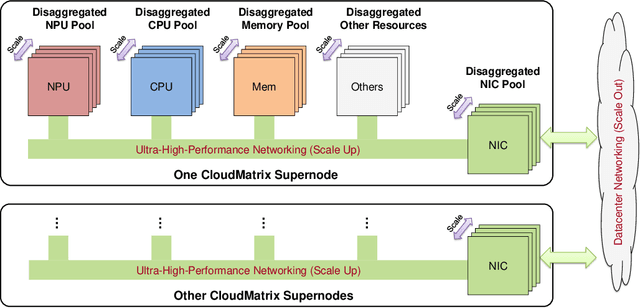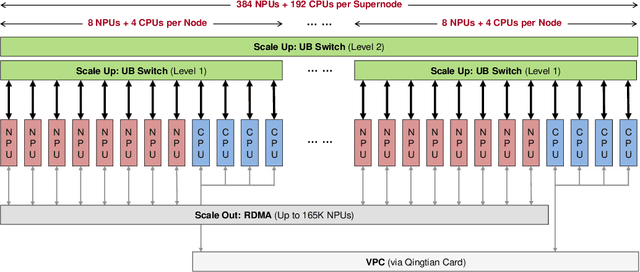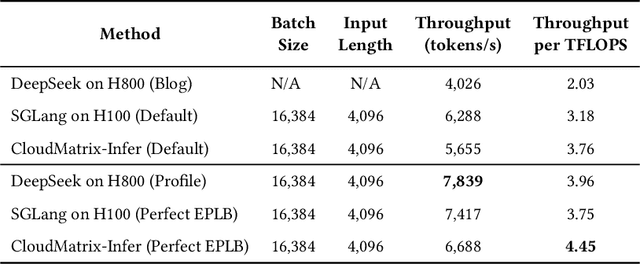Yi Li
Victor
MOC: Meta-Optimized Classifier for Few-Shot Whole Slide Image Classification
Aug 13, 2025Abstract:Recent advances in histopathology vision-language foundation models (VLFMs) have shown promise in addressing data scarcity for whole slide image (WSI) classification via zero-shot adaptation. However, these methods remain outperformed by conventional multiple instance learning (MIL) approaches trained on large datasets, motivating recent efforts to enhance VLFM-based WSI classification through fewshot learning paradigms. While existing few-shot methods improve diagnostic accuracy with limited annotations, their reliance on conventional classifier designs introduces critical vulnerabilities to data scarcity. To address this problem, we propose a Meta-Optimized Classifier (MOC) comprising two core components: (1) a meta-learner that automatically optimizes a classifier configuration from a mixture of candidate classifiers and (2) a classifier bank housing diverse candidate classifiers to enable a holistic pathological interpretation. Extensive experiments demonstrate that MOC outperforms prior arts in multiple few-shot benchmarks. Notably, on the TCGA-NSCLC benchmark, MOC improves AUC by 10.4% over the state-of-the-art few-shot VLFM-based methods, with gains up to 26.25% under 1-shot conditions, offering a critical advancement for clinical deployments where diagnostic training data is severely limited. Code is available at https://github.com/xmed-lab/MOC.
Targeted Deep Architectures: A TMLE-Based Framework for Robust Causal Inference in Neural Networks
Jul 16, 2025Abstract:Modern deep neural networks are powerful predictive tools yet often lack valid inference for causal parameters, such as treatment effects or entire survival curves. While frameworks like Double Machine Learning (DML) and Targeted Maximum Likelihood Estimation (TMLE) can debias machine-learning fits, existing neural implementations either rely on "targeted losses" that do not guarantee solving the efficient influence function equation or computationally expensive post-hoc "fluctuations" for multi-parameter settings. We propose Targeted Deep Architectures (TDA), a new framework that embeds TMLE directly into the network's parameter space with no restrictions on the backbone architecture. Specifically, TDA partitions model parameters - freezing all but a small "targeting" subset - and iteratively updates them along a targeting gradient, derived from projecting the influence functions onto the span of the gradients of the loss with respect to weights. This procedure yields plug-in estimates that remove first-order bias and produce asymptotically valid confidence intervals. Crucially, TDA easily extends to multi-dimensional causal estimands (e.g., entire survival curves) by merging separate targeting gradients into a single universal targeting update. Theoretically, TDA inherits classical TMLE properties, including double robustness and semiparametric efficiency. Empirically, on the benchmark IHDP dataset (average treatment effects) and simulated survival data with informative censoring, TDA reduces bias and improves coverage relative to both standard neural-network estimators and prior post-hoc approaches. In doing so, TDA establishes a direct, scalable pathway toward rigorous causal inference within modern deep architectures for complex multi-parameter targets.
RaGNNarok: A Light-Weight Graph Neural Network for Enhancing Radar Point Clouds on Unmanned Ground Vehicles
Jul 01, 2025Abstract:Low-cost indoor mobile robots have gained popularity with the increasing adoption of automation in homes and commercial spaces. However, existing lidar and camera-based solutions have limitations such as poor performance in visually obscured environments, high computational overhead for data processing, and high costs for lidars. In contrast, mmWave radar sensors offer a cost-effective and lightweight alternative, providing accurate ranging regardless of visibility. However, existing radar-based localization suffers from sparse point cloud generation, noise, and false detections. Thus, in this work, we introduce RaGNNarok, a real-time, lightweight, and generalizable graph neural network (GNN)-based framework to enhance radar point clouds, even in complex and dynamic environments. With an inference time of just 7.3 ms on the low-cost Raspberry Pi 5, RaGNNarok runs efficiently even on such resource-constrained devices, requiring no additional computational resources. We evaluate its performance across key tasks, including localization, SLAM, and autonomous navigation, in three different environments. Our results demonstrate strong reliability and generalizability, making RaGNNarok a robust solution for low-cost indoor mobile robots.
Serving Large Language Models on Huawei CloudMatrix384
Jun 15, 2025



Abstract:The rapid evolution of large language models (LLMs), driven by growing parameter scales, adoption of mixture-of-experts (MoE) architectures, and expanding context lengths, imposes unprecedented demands on AI infrastructure. Traditional AI clusters face limitations in compute intensity, memory bandwidth, inter-chip communication, and latency, compounded by variable workloads and strict service-level objectives. Addressing these issues requires fundamentally redesigned hardware-software integration. This paper introduces Huawei CloudMatrix, a next-generation AI datacenter architecture, realized in the production-grade CloudMatrix384 supernode. It integrates 384 Ascend 910C NPUs and 192 Kunpeng CPUs interconnected via an ultra-high-bandwidth Unified Bus (UB) network, enabling direct all-to-all communication and dynamic pooling of resources. These features optimize performance for communication-intensive operations, such as large-scale MoE expert parallelism and distributed key-value cache access. To fully leverage CloudMatrix384, we propose CloudMatrix-Infer, an advanced LLM serving solution incorporating three core innovations: a peer-to-peer serving architecture that independently scales prefill, decode, and caching; a large-scale expert parallelism strategy supporting EP320 via efficient UB-based token dispatch; and hardware-aware optimizations including specialized operators, microbatch-based pipelining, and INT8 quantization. Evaluation with the DeepSeek-R1 model shows CloudMatrix-Infer achieves state-of-the-art efficiency: prefill throughput of 6,688 tokens/s per NPU and decode throughput of 1,943 tokens/s per NPU (<50 ms TPOT). It effectively balances throughput and latency, sustaining 538 tokens/s even under stringent 15 ms latency constraints, while INT8 quantization maintains model accuracy across benchmarks.
EgoPrivacy: What Your First-Person Camera Says About You?
Jun 13, 2025Abstract:While the rapid proliferation of wearable cameras has raised significant concerns about egocentric video privacy, prior work has largely overlooked the unique privacy threats posed to the camera wearer. This work investigates the core question: How much privacy information about the camera wearer can be inferred from their first-person view videos? We introduce EgoPrivacy, the first large-scale benchmark for the comprehensive evaluation of privacy risks in egocentric vision. EgoPrivacy covers three types of privacy (demographic, individual, and situational), defining seven tasks that aim to recover private information ranging from fine-grained (e.g., wearer's identity) to coarse-grained (e.g., age group). To further emphasize the privacy threats inherent to egocentric vision, we propose Retrieval-Augmented Attack, a novel attack strategy that leverages ego-to-exo retrieval from an external pool of exocentric videos to boost the effectiveness of demographic privacy attacks. An extensive comparison of the different attacks possible under all threat models is presented, showing that private information of the wearer is highly susceptible to leakage. For instance, our findings indicate that foundation models can effectively compromise wearer privacy even in zero-shot settings by recovering attributes such as identity, scene, gender, and race with 70-80% accuracy. Our code and data are available at https://github.com/williamium3000/ego-privacy.
SDN-Based False Data Detection With Its Mitigation and Machine Learning Robustness for In-Vehicle Networks
Jun 06, 2025Abstract:As the development of autonomous and connected vehicles advances, the complexity of modern vehicles increases, with numerous Electronic Control Units (ECUs) integrated into the system. In an in-vehicle network, these ECUs communicate with one another using an standard protocol called Controller Area Network (CAN). Securing communication among ECUs plays a vital role in maintaining the safety and security of the vehicle. This paper proposes a robust SDN-based False Data Detection and Mitigation System (FDDMS) for in-vehicle networks. Leveraging the unique capabilities of Software-Defined Networking (SDN), FDDMS is designed to monitor and detect false data injection attacks in real-time. Specifically, we focus on brake-related ECUs within an SDN-enabled in-vehicle network. First, we decode raw CAN data to create an attack model that illustrates how false data can be injected into the system. Then, FDDMS, incorporating a Long Short Term Memory (LSTM)-based detection model, is used to identify false data injection attacks. We further propose an effective variant of DeepFool attack to evaluate the model's robustness. To countermeasure the impacts of four adversarial attacks including Fast gradient descent method, Basic iterative method, DeepFool, and the DeepFool variant, we further enhance a re-training technique method with a threshold based selection strategy. Finally, a mitigation scheme is implemented to redirect attack traffic by dynamically updating flow rules through SDN. Our experimental results show that the proposed FDDMS is robust against adversarial attacks and effectively detects and mitigates false data injection attacks in real-time.
UniEval: Unified Holistic Evaluation for Unified Multimodal Understanding and Generation
May 15, 2025Abstract:The emergence of unified multimodal understanding and generation models is rapidly attracting attention because of their ability to enhance instruction-following capabilities while minimizing model redundancy. However, there is a lack of a unified evaluation framework for these models, which would enable an elegant, simplified, and overall evaluation. Current models conduct evaluations on multiple task-specific benchmarks, but there are significant limitations, such as the lack of overall results, errors from extra evaluation models, reliance on extensive labeled images, benchmarks that lack diversity, and metrics with limited capacity for instruction-following evaluation. To tackle these challenges, we introduce UniEval, the first evaluation framework designed for unified multimodal models without extra models, images, or annotations. This facilitates a simplified and unified evaluation process. The UniEval framework contains a holistic benchmark, UniBench (supports both unified and visual generation models), along with the corresponding UniScore metric. UniBench includes 81 fine-grained tags contributing to high diversity. Experimental results indicate that UniBench is more challenging than existing benchmarks, and UniScore aligns closely with human evaluations, surpassing current metrics. Moreover, we extensively evaluated SoTA unified and visual generation models, uncovering new insights into Univeral's unique values.
Leveraging Segment Anything Model for Source-Free Domain Adaptation via Dual Feature Guided Auto-Prompting
May 14, 2025Abstract:Source-free domain adaptation (SFDA) for segmentation aims at adapting a model trained in the source domain to perform well in the target domain with only the source model and unlabeled target data.Inspired by the recent success of Segment Anything Model (SAM) which exhibits the generality of segmenting images of various modalities and in different domains given human-annotated prompts like bounding boxes or points, we for the first time explore the potentials of Segment Anything Model for SFDA via automatedly finding an accurate bounding box prompt. We find that the bounding boxes directly generated with existing SFDA approaches are defective due to the domain gap.To tackle this issue, we propose a novel Dual Feature Guided (DFG) auto-prompting approach to search for the box prompt. Specifically, the source model is first trained in a feature aggregation phase, which not only preliminarily adapts the source model to the target domain but also builds a feature distribution well-prepared for box prompt search. In the second phase, based on two feature distribution observations, we gradually expand the box prompt with the guidance of the target model feature and the SAM feature to handle the class-wise clustered target features and the class-wise dispersed target features, respectively. To remove the potentially enlarged false positive regions caused by the over-confident prediction of the target model, the refined pseudo-labels produced by SAM are further postprocessed based on connectivity analysis. Experiments on 3D and 2D datasets indicate that our approach yields superior performance compared to conventional methods. Code is available at https://github.com/xmed-lab/DFG.
Transformer-Based Dual-Optical Attention Fusion Crowd Head Point Counting and Localization Network
May 11, 2025Abstract:In this paper, the dual-optical attention fusion crowd head point counting model (TAPNet) is proposed to address the problem of the difficulty of accurate counting in complex scenes such as crowd dense occlusion and low light in crowd counting tasks under UAV view. The model designs a dual-optical attention fusion module (DAFP) by introducing complementary information from infrared images to improve the accuracy and robustness of all-day crowd counting. In order to fully utilize different modal information and solve the problem of inaccurate localization caused by systematic misalignment between image pairs, this paper also proposes an adaptive two-optical feature decomposition fusion module (AFDF). In addition, we optimize the training strategy to improve the model robustness through spatial random offset data augmentation. Experiments on two challenging public datasets, DroneRGBT and GAIIC2, show that the proposed method outperforms existing techniques in terms of performance, especially in challenging dense low-light scenes. Code is available at https://github.com/zz-zik/TAPNet
TS-Diff: Two-Stage Diffusion Model for Low-Light RAW Image Enhancement
May 07, 2025Abstract:This paper presents a novel Two-Stage Diffusion Model (TS-Diff) for enhancing extremely low-light RAW images. In the pre-training stage, TS-Diff synthesizes noisy images by constructing multiple virtual cameras based on a noise space. Camera Feature Integration (CFI) modules are then designed to enable the model to learn generalizable features across diverse virtual cameras. During the aligning stage, CFIs are averaged to create a target-specific CFI$^T$, which is fine-tuned using a small amount of real RAW data to adapt to the noise characteristics of specific cameras. A structural reparameterization technique further simplifies CFI$^T$ for efficient deployment. To address color shifts during the diffusion process, a color corrector is introduced to ensure color consistency by dynamically adjusting global color distributions. Additionally, a novel dataset, QID, is constructed, featuring quantifiable illumination levels and a wide dynamic range, providing a comprehensive benchmark for training and evaluation under extreme low-light conditions. Experimental results demonstrate that TS-Diff achieves state-of-the-art performance on multiple datasets, including QID, SID, and ELD, excelling in denoising, generalization, and color consistency across various cameras and illumination levels. These findings highlight the robustness and versatility of TS-Diff, making it a practical solution for low-light imaging applications. Source codes and models are available at https://github.com/CircccleK/TS-Diff
 Add to Chrome
Add to Chrome Add to Firefox
Add to Firefox Add to Edge
Add to Edge